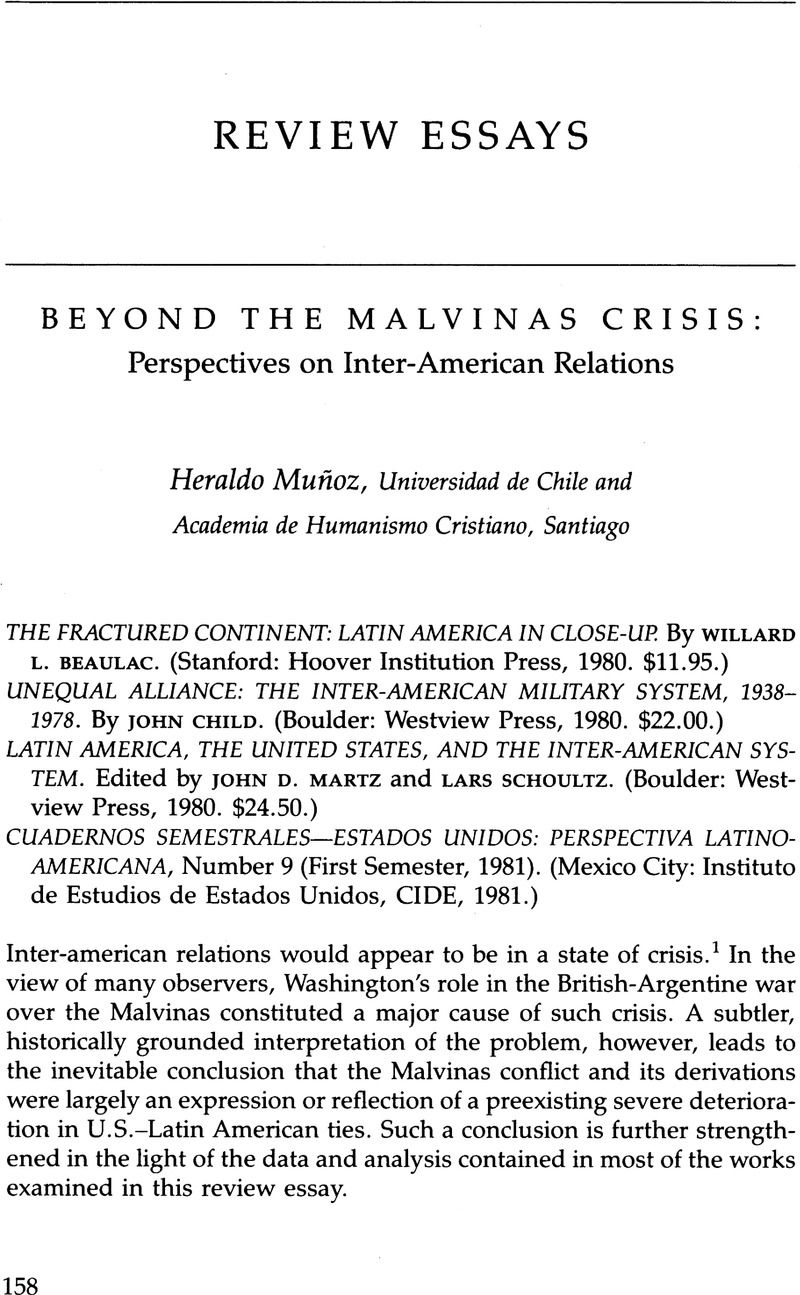Published online by Cambridge University Press: 24 October 2022

1. Although a fine distinction can be made between United States–Latin American relations and inter-american relations, for the purposes of this review essay, the terms are used interchangeably, as has become customary in the relevant literature.
2. A recent, post-Malvinas military cooperation scheme for weapons production involving Argentina and Peru was announced in December of 1982. This bilateral arrangement transcended an already existing relationship of cooperation between the two countries regarding nuclear technology. Clearly, this new cooperation scheme is not precisely a comprehensive “security” accord.
3. On this subject, see Ole R. Holsti, “Cognitive Dynamics and Images of the Enemy,” in Image and Reality in World Politics, edited by John C. Farrell and Asa P. Smith (New York: Columbia University Press, 1967), pp. 16–39.
4. On the concept of hegemony in Gramsci, see Luciano Gruppi, “El concepto de hegemonía en Gramsci,” in Revolución y democracia en Gramsci, U. Cerroni et al. (Barcelona: Editorial Fontamara, 1976), pp. 39–57. See also Antonio Gramsci, Selections from the Prison Notebooks (New York: International Publishers, 1980).
5. For a detailed discussion on this matter, see Heraldo Muñoz, ed., From Dependency to Development (Boulder: Westview Press, 1981).
6. For an analysis of some of the lessons of the Malvinas war, see Heraldo Muñoz, “Efectos y lecciones del conflicto de las Malvinas,” Estudios Internacionales 15, no. 60 (October-December 1982): 499–512. See also the other essays of the same volume that deal with Latin America and the United States in the post-Malvinas period.